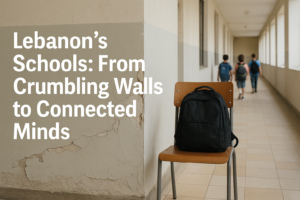In today’s world, where art meets technology, social media has reshaped how we share stories. Instagram’s launch in 2010 brought with it a forced 1:1 square format, making every photo fit into a box. While this made scrolling smooth and feeds look tidy, it also created a huge problem for professionals whose work relied on real cameras and proper framing.
Fast forward to today, and yet another major shift has hit businesses and creatives hard—Instagram’s transition from square-focused grids to portrait-dominant feeds. What once worked perfectly for branding, visual storytelling, and professional portfolios is now being chopped off again, leaving many pages looking unpolished and inconsistent.
Who Got Hit the Hardest?
- Wildlife & Landscape Photographers: Imagine standing on a mountaintop, capturing the endless view, only to have Instagram tell you to crop it into a square. Now, even after adapting, the shift to portrait-dominated content means these photographers must reformat yet again, losing the full impact of wide, breathtaking shots.
- Wedding & Event Photographers: A bride’s flowing dress, a grand venue setup, the energy of a full dance floor—these moments are meant to be captured as they are, not forced into a box or chopped off by an algorithm. The shift from squares to portrait formats has wrecked many wedding photography grids, forcing businesses to rethink how they display their work.
- Businesses & Brands Using Professional Cameras: Hotels, restaurants, and travel agencies once had beautifully designed pages that showcased their full offerings in a neat, branded grid. Now? Many see their work cropped awkwardly or misaligned, breaking once-polished visual aesthetics. Pages that carefully used puzzle layouts, branded themes, or balanced spacing now look broken because Instagram’s latest changes prioritize vertical scrolling and full-screen content.
- Graphic Designers & Social Media Managers: Many businesses built their pages around square-based content strategies, creating seamless puzzle grids and consistent branding elements. But now, text is being cut off, designs no longer align, and past posts look messy compared to the newer format. What was once visually appealing branding now looks like a jumbled, unstructured mix of different formats.
Was the Square Format All Bad?
While frustrating, Instagram’s square format did bring some benefits:
✔ Creative Challenge – Some adapted by using the square as a new way to frame shots.
✔ Consistent Feeds – Businesses could keep a clean aesthetic that made their profiles look professional.
✔ Mobile-Friendly Sharing – It made photography easier for casual users, even if it wasn’t ideal for professionals.
But for real photographers and brands, the limitations outweighed the perks.
Did It Get Better?
By 2015, Instagram finally allowed landscape and portrait formats. But now, in 2025, another major format shift has left many users struggling:
- Businesses had already shifted to mobile photography, and now they have to reformat again.
- Branding grids are broken, making professional pages look chaotic instead of polished.
- Algorithms still dictate what works best, and today, if your content isn’t vertical (9:16), it’s at a disadvantage.
The Bigger Picture: Are We Creating for Art or for Algorithms?
The issue was never just about the square—it’s about how much control platforms have over creative work. Every few years, the format changes. First, everything had to be square, then landscape was introduced, now portrait and full-screen scrolling dominate. What’s next?
For businesses, photographers, and designers, it’s not just about adapting; it’s about constantly rebuilding and redesigning to fit ever-changing platform rules. The real challenge isn’t just following trends, but knowing when to create for yourself and when to adapt without losing your artistic vision.



